This article was written for PuneTech readers by Dr. Basant Rajan, who has played various engineering/management/research roles over 18 years in the Indian Software industry. Most recently he was CTO of Symantec India.
This article is primarily targeted at software professionals (in India) and attempts to introduce a few concepts that’ll help you understand your aspirations and your work environment better, so you can make some career choices that could empower you to realize your true potential. If the section below on employee types, does not strike a chord, the rest of this article will likely not either, be forewarned.
Your long term career prospects depends a lot on the expectations of your manager and organization matching your aspirations. Frustration, especially when linked to growth prospects is often a tell tale sign that something’s amiss.
Before we can narrow down on what is amiss and fix it, we need to cover some ground related to what drives these expectations in the first place. Next we’ll revisit frustrations at the work place in the context of what we learned about organizations and employees. We will then go over some simple tests to help classify your manager and organization and finally use the information we’ve gleaned to chart a possible course of action that will let you positively influence your destiny at the work place.
Employee types – cooks & chefs
 One typically uses the term talent interchangeably with employee. In the context of the Indian software industry however, we see two distinct kinds of employees – one that brings skills to the work place and another that also bring long some talent.
One typically uses the term talent interchangeably with employee. In the context of the Indian software industry however, we see two distinct kinds of employees – one that brings skills to the work place and another that also bring long some talent.
Think of it more like the difference between a chef and a cook. Given a recipe, both can make a delicacy you’ll relish. But you’d expect the chef to be able to surprise you with something he conjured up. Put another way, they both can cook, but have different limits of capability.
We see both the cook and the chef in the software industry too. There are a large number of knowledge workers, cooks, who armed with programming skills, can deliver on complicated software components to a specified design. Then there are some, chefs, who with their deep understanding of the domain to augment their skills, can architect solutions to problems, small and large.
Note, there is nothing the matter with being either one of them …
Engagement models
There are two main reasons why a company opens an offshore branch in India – to save costs, and/or to augment availability of specialized talent.
Correspondingly, there are predominantly two engagement models in play at off-shored operations – the cost leverage model and the talent leverage model. In reality, a single company can have both these models operating in different parts.
Off-shoring under the cost leverage model (CLM) is undertaken primarily to benefit from the cost differential of skilled labour between the two sites. For example, cheap labour is pretty much what drives the growth of call centers in India. For CLM to succeed, the organization needs to be able to source skilled people who can be relatively easily trained for the specific work at hand, in significant numbers. Process driven work can typically be executed well this way.
The talent leverage model (TLM) on the other hand prioritizes the availability of specialized talent over the cost differential. The parent company is setting up their operation in India because they cannot source the required number of specialists locally. That is not to say that the TLM precludes benefits from the cost differential of the two sites.
Note, there is nothing inherently wrong with either model.
Mismatches and frustration
So much for setting up the necessary context and a common vocabulary. From the discussion so far it should be relatively easy to infer that to succeed, organizations should take care to hire the right mix of cooks and chefs.
The cost leverage model expects skilled executors of strategy (cooks) for success while the talent leverage model also depends on the supply of people who can drive the strategy (chefs). Consequently, the cost leverage model (CLM) tends to attract/need managers who are cooks while the talent leverage model (TLM) tends to attract/need managers who are chefs.
Unfortunately organizations often fail to make a conscious identification of the model they are operating under and often end up recruiting the wrong employee type for a given engagement model resulting in a frustrating work environment for the employee. While exploring why organizations slip up on this front is interesting in itself, let’s move on for now.
If you happen to be a chef and find yourself in (part of) an organization that has embraced the cost leverage model, you are likely to get disillusioned as the novelty of the job wears off. Your aspirations for growth aren’t likely to be satisfied in such an environment. Changing roles/jobs will become necessary for growth.
If you happen to be a cook and find yourself in (part of) an organization that’s operating in the talent leverage model, you aren’t that badly off, especially if you are an individual contributor. No organization can function effectively without the cooks and they are therefore valued. However, organizations operating under talent leverage tend to favour chefs when it comes to promotions.
If you are a chef and your manager happens to be a cook, your work environment is likely to be frustrating. Career growth is very unlikely to happen in such situations unless you can successfully work around your manager. Changing roles/jobs is an option worth considering seriously.
Is your manager a cook or a chef?
Knowing one’s manager is certainly a good thing. But for our purposes, let’s just limit ourselves to classifying one’s manager as a cook or a chef … Exactly how does one go about doing that? Fortunately, external behavior you are bound to notice can help you make an informed decision. Here’s how.
- Would you consider him a supervisor (cook) or a real manager (chef)?
- Does/can he exercise his discretion in addressing issues in your environment? (yes- chef)/(no – cook)
- Does he regularly challenge status quo to effect changes for the better? (yes – chef) / (no – cook)
- Does he seem to value growth in size (cook) or growth in impact (chef) of his organization?
- Do you associate him more with your team (chef) or his management (cook)?
- Can he work with influence (chef) or does he always need authority (cook)?
- Caution : be sure not to confuse an isolated incident with a behavioral trait
Which engagement model is in play?
Now that we have the manager nicely squared away, let’s focus on the organization. To determine whether the your organization is really interested in the cost leverage model or the talent leverage model, you could simply ask your manager, but on second thoughts, don‘t bother. What management claims and what they really value can be two different things, so one needs to figure this out for oneself, and here’s a simple test to do it.
- Classify the managers around as either cooks or chefs.
- Next, check to see which ones are getting more promotions, more power and more visibility.
- If the cooks have the upper hand and the chefs are running into roadblocks or leaving, you are looking at the cost leverage model in operation. If the reverse is true, then you have an organization that values talent leverage.
- Again a word of caution : take care to distinguish between isolated incidents and a trend.
Don’t surprised to see significant numbers of successful cooks in an organization that has embraced the talent leverage model. Look a little closer and you’ll see that most positions of influence in such an organization are held by chefs. Remember, that while one can’t have an army without soldiers, to be successful they need to be led in battle by officers of calibre.
Empower and be free…
Hardest for last … now what can that be?
Given that you’ve just finished judging your manager and your organization, now might be a good time to introspect and make an honest assessment of what you bring to the table, just skills or talent as well?
As the road to self realization is still uncharted territory, you’ll have to figure this part out yourself 🙂
Assuming you got back from the wilderness, it’s about time you got down ensuring a sustainable. mutually rewarding, relationship at the work place and signing up to making it happen.
Now that we’ve decided to act, it’s perhaps a good time to arm ourselves with a little prayer (ok, indulge me …, for now, let’s assume there is a God) … and here it is.
The serenity prayer (excerpt) …
God grant me the serenity
to accept the things I cannot change;
courage to change the things I can;
and wisdom to know the difference.
… and the industrial strength version (snippet)
if (type(self, wisdom) == CHEF) { /* you sure?, just kidding ... */
if (model(self.org, wisdom) == CLM)) { /* in the wrong type of org */
change_org(courage);
} else {
if (type(self.manager, wisdom) == COOK) { /* unfortunate ... */
wait timeout { /* the organization might correct it */
manager_might_change(hope);
} change_role(courage); /* else, you have to do the honours */
} /* else: lucky you! */
}
} else { /* you happen to be a cook ... */
if (model(self.org) == TLM) { /* wrong place for fast growth */
accept_it(serenity); /* but it ain’t so bad ... */
} /* else: lucky you! */
}
Note : God has been coded away in the industrial version, so you’ll have to make do with friends and family.
The bad news is that typically, one cannot hope to change the engagement model or one’s nature in short order.
The good news is that given the wide variety of needs and opportunities that exist, finding a work environment that suits your style is not likely to be hard once you know what you are looking for.
Let’s wrap up with a toast to “marriages made in heaven!” (else, just so you know, my wife’s a counselor).
Disclaimer
The views expressed here are solely mine and are not intended to expressly hurt the feelings of any particular minority group or organization.
This disclosure was made under duress brought to bear by Navin Kabra.
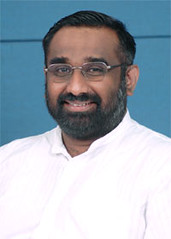
Credits
These thoughts have been shaped by a lot many colleagues and for that I am forever grateful.
About the Author – Basant Rajan
Basant Rajan holds a Doctorate in Computer Science from TIFR, Bombay and is currently an independent consultant.
He has 18 years of industry experience, and previous positions held include CTO, Symantec India heading up Symantec Research Lab (India) and Sr. Director, Symantec heading the Storage Foundations group in Pune and has been actively involved in promoting innovation at various levels within the engineering community at Symantec. He also concurrently held a Visiting Member position at TIFR, Bombay for a few years.
With a number of publications and patent applications to his name, Basant’s areas of interest include organizational change, storage technology, distributed systems, formal languages and logic.
He can be reached at basant+web [at] gmail.com.
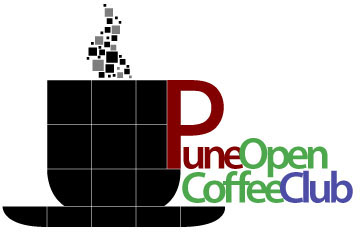
![Reblog this post [with Zemanta]](http://img.zemanta.com/reblog_b.png?x-id=fa5e9fe1-8420-44af-b3ac-c753868f7e2f)

![Reblog this post [with Zemanta]](http://img.zemanta.com/reblog_b.png?x-id=a61044a4-8ca0-4563-a76f-31c1bf430893)
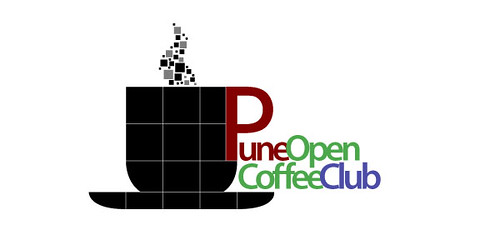
![Reblog this post [with Zemanta]](http://img.zemanta.com/reblog_b.png?x-id=fe808f0a-0627-4bfb-addb-8f5798de917d)
![Reblog this post [with Zemanta]](http://img.zemanta.com/reblog_b.png?x-id=6ab2514b-6008-4b68-9e94-b55811ca6159)


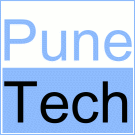
![Reblog this post [with Zemanta]](http://img.zemanta.com/reblog_b.png?x-id=9aa63277-de65-45bc-94a2-a7a2836abf82)
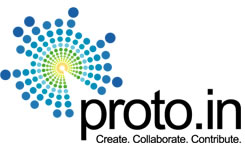
![Reblog this post [with Zemanta]](http://img.zemanta.com/reblog_b.png?x-id=a33b121f-7303-4194-94ee-83b0a1fd6eec)
![Reblog this post [with Zemanta]](http://img.zemanta.com/reblog_b.png?x-id=318230d5-3dc1-4696-a797-91f0ddf669d0)
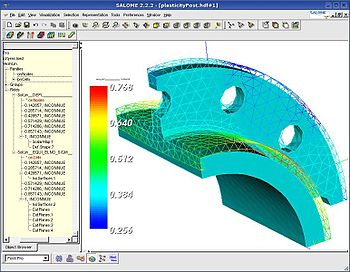

![Reblog this post [with Zemanta]](http://img.zemanta.com/reblog_b.png?x-id=500333de-e95f-4c59-b0ac-fd2d0abd18ba)

![Reblog this post [with Zemanta]](http://img.zemanta.com/reblog_b.png?x-id=6a4c7988-4452-49ab-89ba-f868b84c6b16)